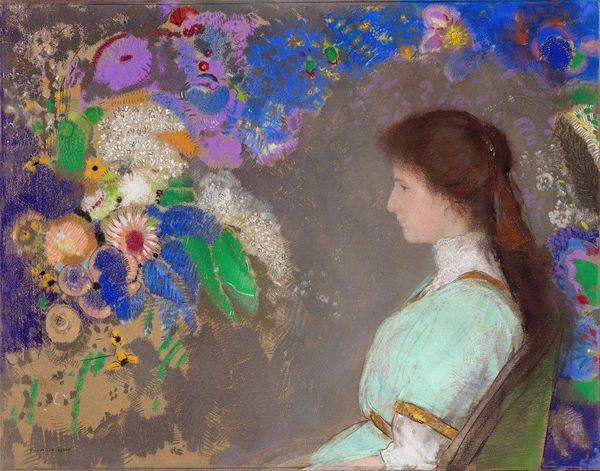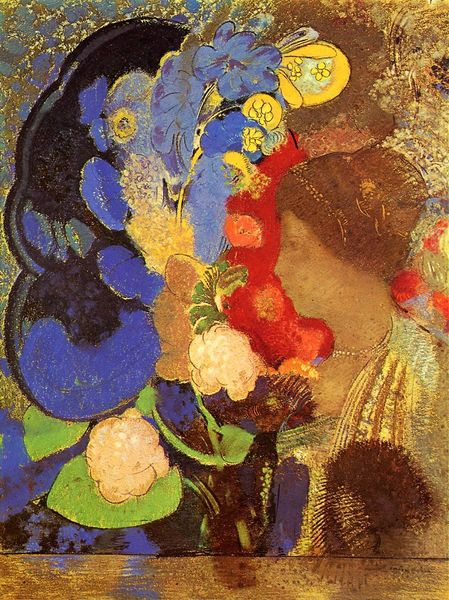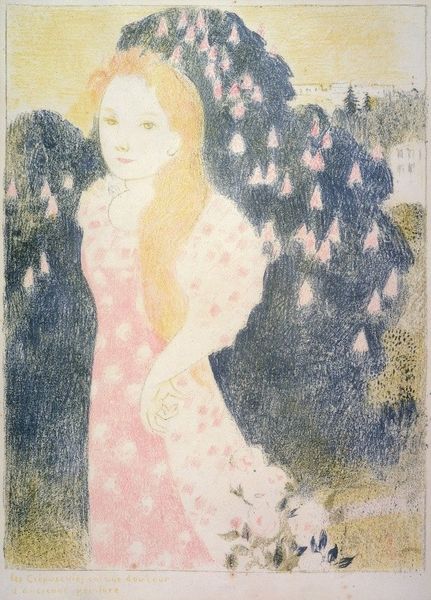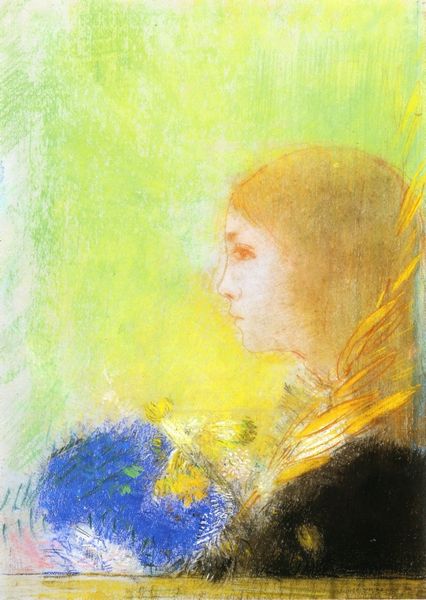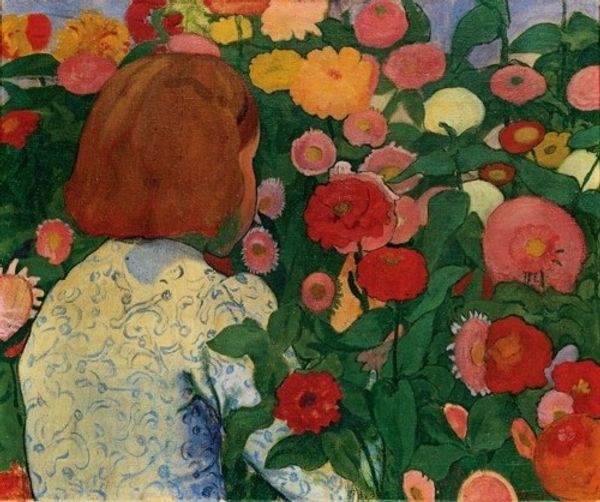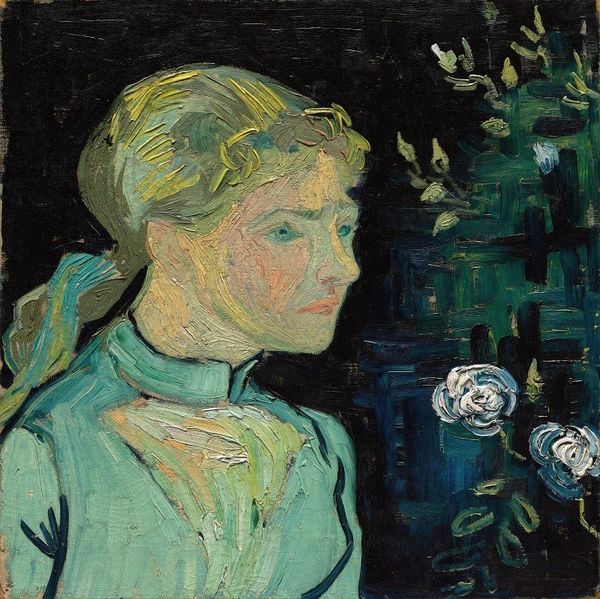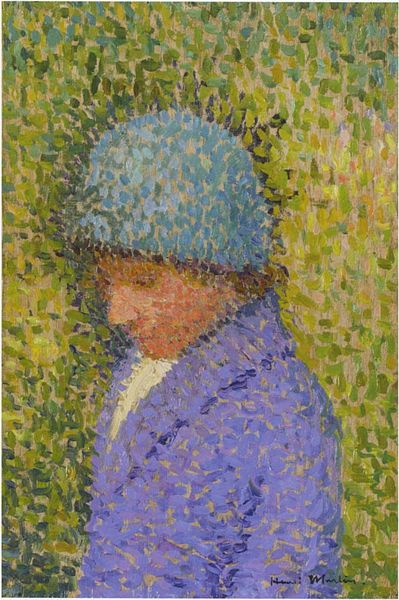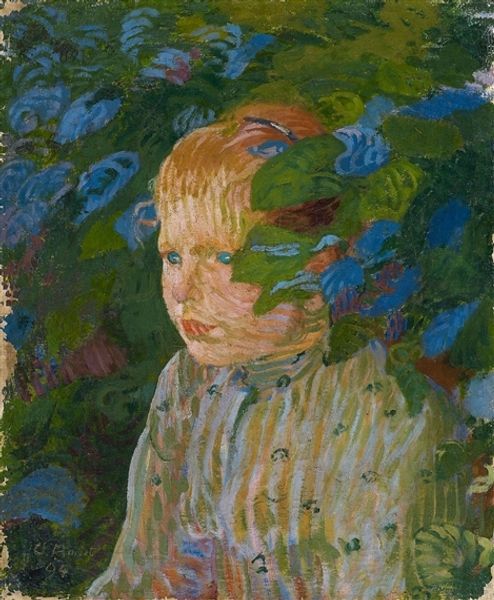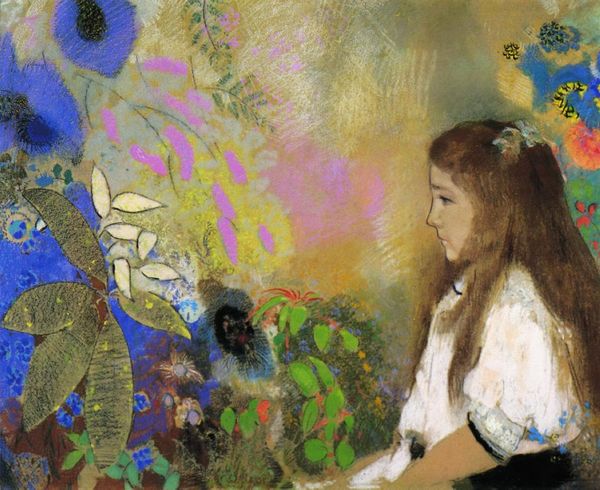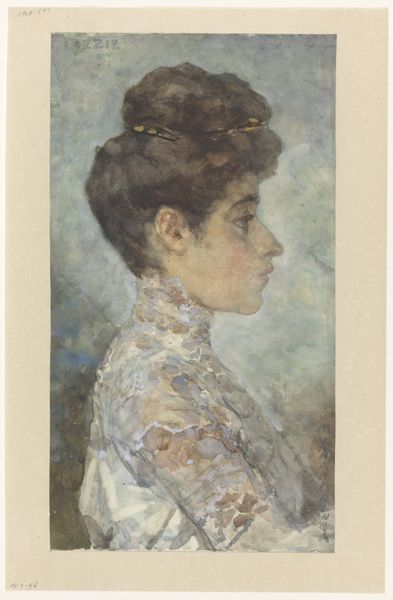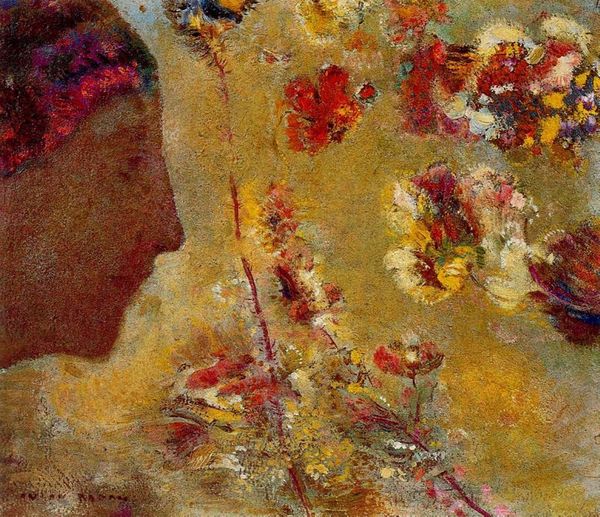
Copyright: Public Domain: Artvee
Curator: Stepping closer, I’m immediately struck by the delicate layering of color. It's as if the artist has breathed life onto the canvas. Editor: Indeed. What we are observing here is Odilon Redon's "Baronne de Domecy," dating back to around 1900, an oil painting. The overall impression is melancholic. There's a distinct ethereal quality, heightened by the choice of pale blues, greens, and contrasting strong reds. Curator: Let’s consider the oil paint Redon chose for the medium. There is such attention to its handling, almost a caress rather than an application. It really softens the forms. And these floral motifs framing the figure are especially tactile. Editor: I'd also argue that Redon’s Baronne represents a moment of fascinating tension. During that period, the depiction of women in art was laden with social expectations. Her contemplative expression challenges the conventional roles society ascribed to women then. Redon's works give visibility to other, sometimes stifled possibilities, Curator: Very well. The sitter's gown, her subtle makeup, all speaks of privilege, even in the delicate impressionistic style—and it cannot be extracted from its art-historical situation within fin-de-siècle society. Consider how portraits of society women both reflected and shaped contemporary values of class. Editor: The baronness becomes almost an allegorical figure against this background, symbolizing a potential challenge to bourgeois conventions and a push toward symbolic empowerment in a world that continues to negotiate changing roles for women. Her direct gaze challenges, though passively, viewers’ traditional gaze. Curator: Right, in my reading, I wonder what specific manufacturing processes informed these vibrant pigments. Each brushstroke required an interaction between the maker, the medium, and the surface, resulting in a captivating and unique artwork, reflecting late nineteenth-century advances in paint technology that made these luminous colors more accessible. Editor: Well, by re-examining historical context through an intersectional lens, artworks like these can prompt profound engagement. Curator: It's fascinating to delve into these subtle but relevant qualities. It’s often within the quietest details where we perceive an artist's brilliance most evidently. Editor: Agreed. Analyzing such intersections offers a potent opportunity to reconsider the ways social constructs might have been historically, or still are today, embodied by portraits of this era.
Comments
No comments
Be the first to comment and join the conversation on the ultimate creative platform.
